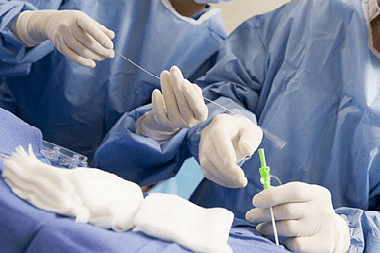Medical procedures >>>> Radiofrequency ablation of the heart
Radiofrequency ablation of the heart.

Radiofrequency ablation of the heart, or radiofrequency catheter ablation, is a high-tech treatment for cardiac arrhythmias that rivals drug and surgical treatments for arrhythmias.
During the course of the operation of radiofrequency ablation, the zone of the myocardium (heart muscle), provoking arrhythmia, is revealed. This zone is affected by bringing an electrode through which a high-frequency electric current is passed, which changes the impaired conduction of the electrical impulse in the fibers of the heart muscle and restores the electrical conductivity in this arrhythmogenic zone.
To bring the electrode to the heart muscle, the subclavian or femoral artery (vein) is punctured, and a catheter is inserted into it. An electrode is pulled through the catheter and is brought to the areas of the myocardium necessary for examination and the operation of radiofrequency ablation. Before having a direct effect on the myocardium, arrhythmogenic zones are tested to clarify the location of the electrode. Electrode manipulation requires local anesthesia of the vessel incision site for insertion of the catheter. The whole process is output to a computer, where a visual image is formed and tests are analyzed.
At the time of radiofrequency cardiac ablation, the work of the heart is monitored by a physician.
Method of radiofrequency catheter ablation of the heart is considered to be less traumatic method than direct surgery. But, like any medical procedure, it has contraindications and complications (an extremely small percentage).
Possible complications of radiofrequency ablation:
- hematoma,
- vascular thrombosis,
- damage to the walls of the vessel or myocardium,
- spasm of the arteries or occlusion (closing) of the walls of the arteries.
Contraindications to radiofrequency ablation:
- Allergic reaction to a radiopaque substance,
- Uncontrolled arterial hypertension,
- Endocarditis,
- Decompensatory changes in the work of the heart and lungs.

Read

Read



























